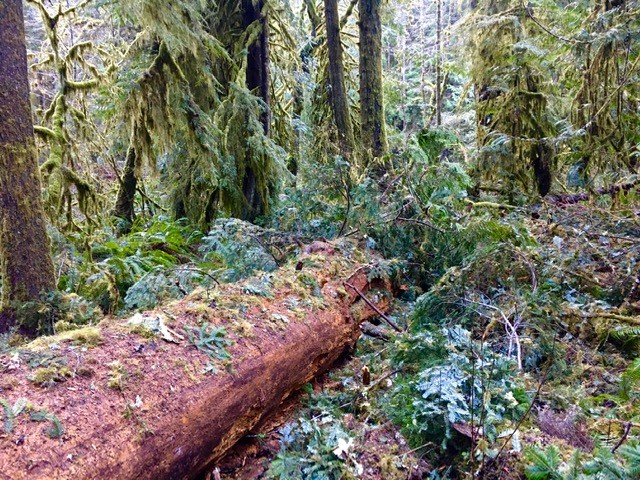
The Answers That Blow in the Wind…
While the cool waters of the Pacific Ocean steer hurricanes and tornadoes clear of the Pacific Northwest, the region is not unfamiliar with strong and damaging winds.
Wind is often viewed as an exceptional, catastrophic phenomenon as opposed to the natural, recurrent disturbance that drives ecosystem patterns and processes.
With trees that reach over 100-feet high, northwest forests are particularly vulnerable to the effects of strong windstorms.
As in any ecosystem over time, the biotic (living) factors find ways to adapt to their abiotic (nonliving) factors. ‘Adaptive growth’ is a term used to describe the process of acclimation to wind that develops in trees.
Displacement of branches and leaders by wind yields growth responses that produce shorter, thicker trunks and branches, reconfigured in ways that streamline foliage and reduce exposure to help resist future bending and breaking.

It has been found that root anchorage increases as wind exposure increases, allowing the tree to be better equipped for the next episode of high winds.
Maybe you have noticed while on a walk through the forest, snags that have lost their bark and display spiraled wood grain. These “corkscrew trees” twist in the direction of prevailing winds (to the right in our region where prevailing wind direction is west/southwest.) Scientists hypothesize that spiral grain makes trees stronger, and better able to withstand the stresses from wind.
Trees have evolved many ways to bear wind, but even a well acclimated tree can fall victim to windbreak and uproot when the wind load exceeds the built resistance. The process leading to breakage and uprooting are complex and depend on many other factors such as precipitation, temperature, and root rot.
Although wind has potential to be lethal for an individual tree, or an entire stand, the force can also be considered a rejuvenating process that reshapes forest composition and structure.
Wind events can damage the overstory and open the canopy to make light available to understory plants and leave behind deposits of branch and stem material on the ground. These new additions of large woody debris provide habitat for microbial, insect, and plant communities. Upturned roots expose soil and act as seed sinks. Studies in the Pacific Northwest have shown that these blowdown patches overtime have higher diversity than the surrounding forest.
Wind is one of the most important natural disturbances influencing forest structure. Individual windstorm events can leave a legacy on the forest that lasts centuries, or longer. Not to mention, nearly all conifers rely on wind for pollination. The same pervasive force that can bring down a 100-foot tree, is also what brings it to life.


